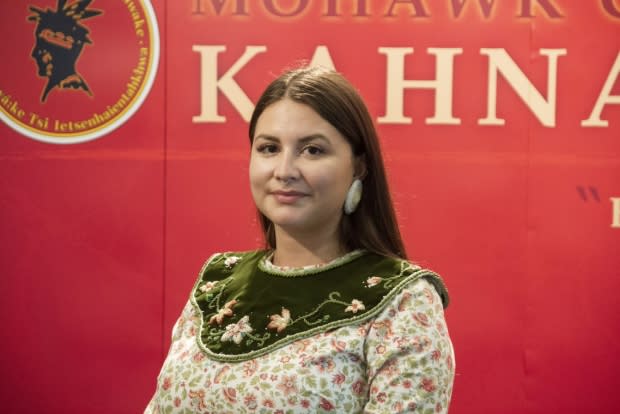Gaps in census data collection may show incomplete picture of Indigenous languages

Dialects of Inuktitut and Cree are the main Indigenous languages spoken in Canada, according to new data from the 2021 census released on Wednesday.
However, the report says incomplete data missing from several dozen First Nations communities may have impacted the results.
According to Statistics Canada, dwelling enumeration could not be completed in 38 communities due to pandemic restrictions or events such as evacuation from forest fires, while 25 First Nations communities did not give permission for census workers to enter their territories last year.
Kahnawake, a Kanien'kehá:ka (Mohawk) community south of Montreal, has historically not participated in the census.
"We're not Canadian. So we don't belong in the Canadian census," said Ietsénhaienhs (council chief) Teiotsistohkwathe Jessica Lazare at the Mohawk Council of Kahnawake.
Lazare said there's also concerns about the community's data sovereignty.
"We can't really control how that information is going to be used," she said.

It's why Kahnawake has conducted its own studies or surveys, including on the health of Kanien'kéha, or the Mohawk language. The results of the census reflect some trends of what is known about the language.
What does 2021 census data show about Indigenous languages?
Based on the data collected in the census, the number of individuals who reported speaking an Indigenous language as their first language declined 6.8 per cent from 2016 to 2021, to 189,000, and 183,000 people speak an Indigenous language regularly at home.
More individuals could conduct a conversation in an Indigenous language — 243,000 people — indicating that Indigenous languages are being learned as second languages.
Inuktitut and Cree languages were the Indigenous languages spoken predominantly at home by the most people, with 27,140 speaking Inuktitut and 26,690 speaking Cree languages.
Mi'kmaw was the most common Indigenous language spoken predominantly at home in the Atlantic provinces, except for in Labrador where it was Innu. Dialects of Cree were the most widely spoken Indigenous languages in Quebec and the Prairie provinces, while in Ontario, Anishinaabemowin dialects were most common.
Indigenous languages spoken predominantly at home
Largest number of first language speakers in Quebec
Of those who speak an Indigenous language as their first language, alone or with another language, four in 10 lived in one of the Prairie provinces and one-quarter lived in Quebec. The largest number of people — 45,600 — with at least one Indigenous first language were also located in Quebec.
Indigenous languages were also spoken by significant populations in Saskatchewan (27,500), Manitoba (26,500), Alberta (24,600) and Nunavut (23,000).
Nearly four out of five people whose first language was an Indigenous language reported speaking that language at home at least on a regular basis (78.2 per cent) and more than half spoke it predominantly at home (51.3 per cent)
In 2021, approximately three-quarters of those people whose first language was Atikamekw, Innu, Inu Ayimun (Southern East Cree) or Inuktitut spoke that language predominantly at home.
Endangered languages
According to the United Nations Educational, Scientific and Cultural Organization (UNESCO), there are 86 distinct Indigenous languages in Canada. The majority of those languages remain endangered — including Kanien'kéha.
For Lazare, the data collected needs to be more than just quantitative. A fuller picture on the health of a language is also a source of motivation, she said, for those tackling language revitalization efforts
"It's a huge journey and a huge undertaking," said Lazare, who graduated in 2019 from the Kanien'kéha Ratiwennahní:rats Adult Immersion Program before getting elected to council.
"It's important to have the bigger picture to look at the health of our language in order to adapt and change and overcome some of the challenges that present itself."

